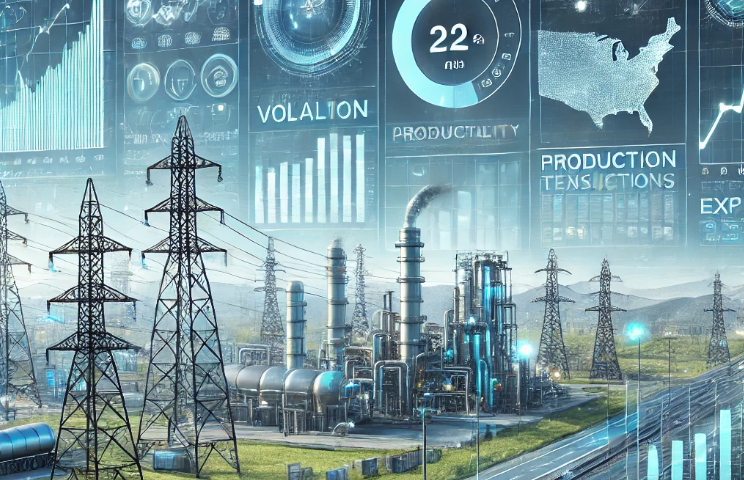Artificial intelligence (AI) is driving a massive transformation in global energy consumption, with its increasing computational demands reshaping the energy landscape. This shift is expected to have long-lasting effects on energy markets, infrastructure, and sustainability efforts.
AI and Rising Energy Demand
AI’s growing energy appetite stems from the power-intensive nature of training and running AI models. Each AI query requires a significant amount of computation therefore more energy. For instance, a single ChatGPT query can use up to 10 to 100 times the electricity of a standard Google search. As the scale and complexity of AI models expands, so does the need for more robust data centers that house powerful servers and cooling systems, consuming vast amounts of energy.
According to Goldman Sachs, AI-driven data centers are set to experience a 160% increase in power demand by 2030. Currently, data centers account for 1-2% of global energy consumption, but by the end of the decade, that figure is projected to rise to 3-4%. While in the U.S. currently 4% of the total electricity is being used by AI-drive data centers some estimates predict that data centers in the U.S. alone could consume up to 9% of the nation’s total electricity by 2030.
Impact on Energy Markets:
The increase in AI-driven energy demand is expected to drive energy costs in the long term:
Increased Power Generation Needs: The increasing electricity demand driven by AI will call for an increase in generation or the need for more power plants. The US’s electricity consumption is projected to reach 35 GW by 2030, nearly double from 17 GW in 2022. The US will need an additional 18-20 GW of generation to meet this projected demand. Utilities are expected to invest around $50 billion in additional power generation to meet this demand.
Increased Transmission Needs: Handling AI-driven electricity demand in the U.S. will require major grid upgrades. Around 70% of U.S. grid infrastructure is over 25 years old and nearing the end of its lifespan. The Department of Energy estimates transmission must grow by 60% by 2030 and could triple by 2050 to meet rising energy demand. Utilities will need to invest heavily in improving grid reliability, expanding transmission networks and modernizing aging infrastructure. These investments, expected to total billions of dollars, will likely lead to higher transmission costs for consumers.
In the short term, being informed about the key drivers of energy markets is essential. This knowledge will enable you to proactively develop strategies to effectively manage all aspects of your energy while mitigating risk of the coming generation and transmission market fluctuations.




